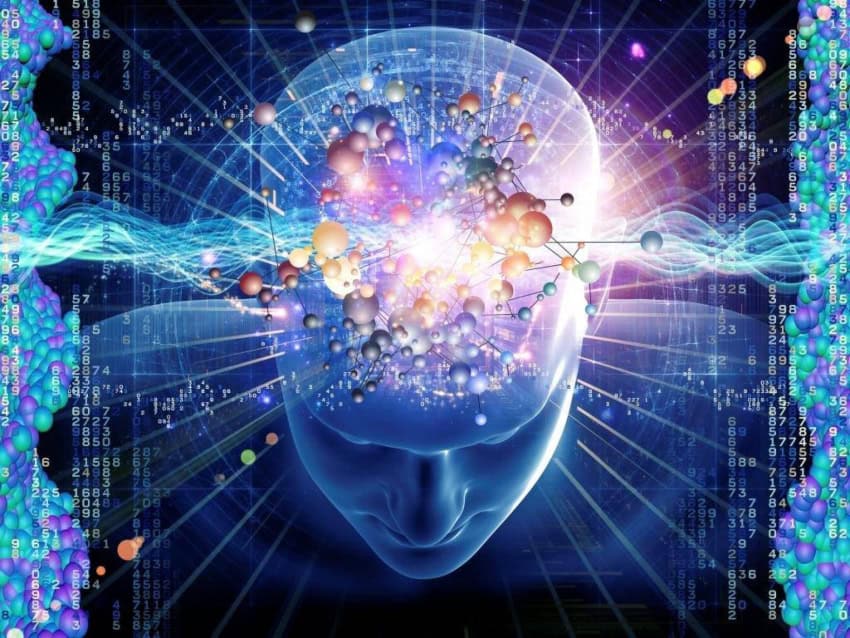How the mind works is an absolute mystery to mankind.
Though it is not the only ‘hard problem’, there are many others. For instance, there are all the irreducible fundamentals or universals, like time, space and force that cannot be explained in terms of any components they would bear.
The fact is, all things are explained by their components, like – what is water, a combination of Hydrogen and oxygen, what is oxygen, a combination of electrons and protons, what is an electron, a combination of energy and spin. In this customary/essential way of explaining things we inevitably always end up at some fundamental entities that we just know they exist, but we cannot tell what they are made of, and because of this, these fundamentals become a hard problem, coinciding with the hard problem of conscience – how does the mind know some things that have no material components and is the mind, not itself such a fundamental!
Time, space and force are such entities that we just know exist, but cannot see or touch, or know a particle such as a timeaton or a spaceaton or a forceaton that carries them. In the case of force, we formulate it in terms of mass and acceleration. And if we come to think of it, both mass and acceleration have no building blocks of the sort similar to those of force, the resetting of which would convert them to one another.
They are, like one chair added to one apple cannot make two cars, diametrically different things. Such that when force is produced as mass hits another mass with a speed, scientists have no clue as to what is actually carried from one mass to the other in material terms.
Is it so, that at the quantum level, the subatomic particles are actually nothing but packs of energy and have no component of matter at all. In that case, the hard problem can be subverted in the sense that one form of energy is inter-convertible with another form of energy, but still, scientist would not have any clue as to how packets of energy change into impact, except that we all know them to do so.
This type of dilemma was faced by scientist very early and since has always been pushed under the rug. Quoting Noam Chomsky, ‘All of this is normal science, and like much normal science, it was soon shown to be incorrect… The properties of matter, Newton showed, escape the bounds of the mechanical philosophy. To account for them it is necessary to resort to interaction without contact. Not surprisingly, Newton was condemned by the great physicists of the day for invoking the despised occult properties of the neo-scholastics’. Newton had shown concern over the fact that gravity, a force, acts at a distance, without material contact – there is no detectable ‘photon’ or ‘graviton’ that carries this force from source to object.
The mind-problem is similar to this is some ways, but as we have direct experience of it, we may realize it more profoundly. We know that the brain, with all its grey matter, neurones and synapses, is the station wherefrom the thought emerges. In the urge for a material basis, many scientists disregard the ‘soul’ as being an independent entity and bearer of thought, but still, the grey matter, which is essentially a ‘matter’, cannot be said to be in itself the bearer of thought either. Like Leibniz explained, ‘imagine someone walking through an expanded brain as one would walk through a mill and observing all its mechanical operations’ – nowhere, according to Leibniz, would such an observer see any conscious thoughts. So, essentially the question becomes as to when, where and how the material action between synapses change into thought? Thought being a totally non-material, ‘idea’ – the wonder is, how did matter change into non-matter and how did that non-matter become so picturesque?
The biological examination of the brain, which does tell us a lot about the complexity of the apparatus that aids us to think, an apparatus which also effects the thought in many ways, and tells us about the mind-body relation – nevertheless is only about molecules, neurones and the electric impulses that move between them. But the thought, as we behold it, seems to be a completely separate domain. We can think of the particles and the movements and have qualia of all that too, but all the other thoughts we have, have so many other qualia that they cannot be justified with one grey-matter impulse alone.
For this reason, the mind, as opposed to the brain, cannot be a form of ‘emergence’, a phenomenon which says that when two entities (e.g. Oxygen, Hydrogen) combine to form a third one (water), the properties of the third are altogether different from those of the first two. ‘Emergence’ caters for physical properties, such that the properties of all three in the given example are detected in parallel to each other’s like we would compare the color, mass, spectrum or chemical reaction of each to other two – which are almost the same number of properties with different results. But here in the mind, we see that synapses between grey cells create an emergence of innumerable variety and senses – innumerable because the richness of our experiences is always increasing and we have no idea where its limits are. So what emerges in the form of thoughts is a set of properties which has innumerable and manifold possibilities and cannot be equated with the very limited number of physical properties.
The only way to know about thought is by thinking about it, this may seem to be a uniqueness, and it strike us with awe to think that the thought is so different from everything else that it cannot be detected by any means but the thought itself. However this is true for most basic entities – we measure length by small pieces of length, weight is measured with other weights. We make standard examples of an entity and measure their similars with those standards. So we live in a strange world, to begin with, made of universals/fundamental entities that are disjoint with each other in the material sense – and who are united only in one domain, that of the thought – the thought is the only unifying domain that ‘just knows’ each of them in its own way of sensing them.
Yes, there is a sense of touch and smell that import the physical feeling through the nerves of our bodies, but the sense in which the thought interprets these impulses are a characteristics ‘in-itself’ of the thought. More so of what we see. The way we see things can be very unique, and the way we imagine them remotely can be totally different worlds. In fact, ‘imagination’ is the place where we do most of our thinking.
Perceiving data, received from the external is just one element of the many, the thought has to deal with. Once the data is received from the outside, the mind undergoes several processes like categorizing, conceptualizing, generalization (rule-making), evaluating, imagining, believing and expecting etc., all rational but extremely complicated processes. Most of these processes are not always done consciously, so much of organization is predisposed to us that we have to believe in a subconscious that is always busy and full with doing numerous of these functions, making it possible and easy for the conscious thought to play on.
A subconscious is an amazing place. Introspection into our own thoughts lead us to clues about how deep, how organized and how enormously expanded and various our subconscious must be. Personal experience may illuminate upon us, the richness we encounter within ourselves every day of our lives. The ability of the mind to comprehend multiple subjects from sciences, to social issues and from money matters to wars and to arts, everything is within our reach. In fact, the internet age has revealed upon us that anyone with appropriate language skills can read and comprehend any subject matter, no matter if s/he is reading it for the first time in life – this tells us something about the extent of the possibilities the thought has. One moment we may be amusing ourselves with rare species on a geographic channel, the other we may be talking of a Big Bang that happened billions of years into the unknown past, then we could talk of a political scandal and right away about a new recipe – the thought instantly being able to refer with phenomenon far apart in space and time.
There is so much that we do in our lives that is part of the thought and not of the material world – we dream, we love, we conceptualize and theorize. A concept or a theory is totally a mind thing, first the mind gives names of its own choosing to external objects, then forms a concept around how it works, what it’s worth is and its relation to other things; and then for things or workings that are not obviously out there, we make theories. The fact that concepts and theories are the way ‘we’ chose to see the world, makes them somewhat relative, so they keep changing with time and space.
More illustrious are the spaces in the thought where we fantasy with colors, spectacular places and situations in our imagination that are completely out of the world – the more we think, the more thought opens new worlds upon us. The readiness of all this, gives us the notion of having access to a virtual library of immense resource, that is normally dormant and initiated when we encounter something in our surroundings, which would summon in us the process of thinking. It is true, the external triggers the thought but has no jurisdiction on to what will resultantly emerge.
This does give us the thought that perhaps if there was no external world, there would be no urge to think. And maybe the thought along with the soul that embodies it would extinguish into nothingness. Perhaps then the brain is also essential to the thought, upon the energy of whose grey cells the conscious and the subconscious feed. Will the thought survive the death of the brain is another thought-question, but for now it suffices that a weak or numb brain hampers the thought to progress, therefore matter and the sublime do have some connection between them, however unexplainable. But does this mean that the thought is a side-effect or a by-product of the physical process and more so does not the thought also work ‘without’ external stimuli all the time?
While physicalists see that the ‘explanatory lapse’ between the brain and the mind is only due to the early stage of our inquiry in this matter, which will be overcome in time – Darwinian philosophers like Daniel Denette just deny the existence of consciousness. According to John Searle, ‘for him, it refers only to third-person phenomena, not to the first-person conscious feelings and experiences we all have. For Dennett there is no difference between us humans and complex zombies who lack any inner feelings, because we are all just complex zombies’.
Such an argument is self-deceptive from the onset, as the first-person conscience is the basis of all thinking, phenomenology and concept-sharing – if the thought of an object is not real, then there is no other means for us to identify the reality of the object. As Searle magically puts it, ‘you can’t make the distinction between appearance and reality, because the existence of the appearance is the reality in question’. Which means that if we do not accept the appearance of reality in our thought to be true, then there is nothing left to talk of.
So how really is mind or conscience, the hard problem?
Firstly it is undeniable – to say of ‘thought’ that it does not exist in itself but is, just like the wave is to the sea, an inherent mode of the grey cells that holds it – just the other side of the coin – is to pillage it of its unique position of being a beholder of limitless possibilities that assimilate all qualia – that of the wave, the sea, the fish that swim in it, its salinity, the tension of its surface, its depth, its width and the ocean it is destined to meet. It is like shutting down the human thought in a closed box, opposed to its own claim to be the sole conscious observer of the Universe, who has come to gaze it after its billions of years of evolution. Just like gravity exists without a particle to carry it, the sublime thought is such that it reaches the farthest edges of the Universe with instant speed and communicates without contact.
Secondly, it is irreducible, therefore a universal entity. Although we recognize thought to have numerous functional components, starting from the basic ability of differentiating and segregating things from within a continuous environment, to be able to name them, count them etc., to being able to talk of them, ascertain their working, generalizing laws and making decisions, so on – but all that is sublime and we cannot say of the thought that it can be broken down into x and y, such that x and y are independently recognizable entities, sublime or material. The thought is just thought, that’s it, it is not even like force, who is proportionally related to mass and speed – there is just nothing we can refer it to!
The thought is real, it is a feel, it is sublime, subjective and it is its own observer and detector – you know that you are thinking when you are thinking – your thinking defines your existence and the existence of everything around you. If the thought is not real, nothing else is either!
Why is it then, so essential for the materialist to deny the existence of this fascinating thing that makes for all the color and wonder of our lives? Their fear is apprehensible, once we accept the existence of a non-material entity, we are moved into a world made of a duality of matter and a thinking entity, perhaps the soul. The existence of the soul opens the possibility of any number of soul-like things that are immeasurable and unknowable to us by physical means. We become co-inhabitants of a universe filled with fairies and jinn. To avoid such irrationality that blurs the lines between the real world and an unreal real world that runs parallel to it and to retract to the position that thought and the brain are really two sides of the same coin – and that thought is really another way to see the brain and that thought is merely a property of matter, like the other properties of matter such as mass, motion, color etc. – physicalists sometimes accept the conclusion that perhaps every entity, like all atoms and electrons etc. have a conscience. By this, they assume that conscience or thought is a property of matter and nothing separable or unique from it.
This does seem to resolve the matter at first glance, but not really. If everything has a conscience, a thought, a self-awareness, then it’s not just the atoms, it is also a self-aware Earth and a self-aware Universe. A self-aware Universe that has perhaps consciously allowed the evolution of an eye that could finally gaze at it, be enchanted with it, love it back and possibly create a clash of egos!
Perhaps this hard question of the mind and the conscious thought that it holds, cannot be resolved by the comparison between mind and matter. Like you can’t measure time with space, but only with small, standardized bits of time – you cannot measure thought with synaptic activity. Thought can only be measured in terms of thought, can only be detected by thought and defined only in its own terms. Only the thought can tell us what its domains are, and it will decide the truth of things because truth is what we think the truth is!














